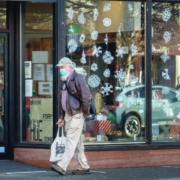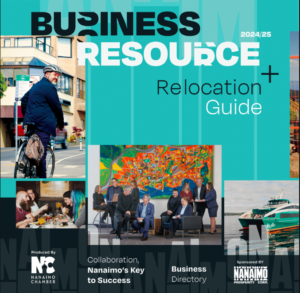Over the past 15 months, Vancouver Island has battled COVID-19 and felt the impact of the virus on our mental health, our economic vitality and on our community spirit.
British Columbia has fared well compared with many other jurisdictions across the world, but still this battle has been exhausting and frustrating. We are all tired.
With a few exceptions, the provincial strategy has treated all of B.C. the same when it comes to implementing restrictions, despite the rate of outbreaks and case numbers being drastically different across health authority jurisdictions.
Vancouver Island continues to be the bright spot in terms of provincial COVID numbers. Since Oct. 12, 2020 (before the rigid restrictions of November), we represented 3.7 per cent of total new cases.
Since April 6, when the latest additional restrictions or “circuit breaker” restrictions were imposed, including the strict travel restrictions, Vancouver Island represents only 3.8 per cent of new cases.
This is not a time to play the “blame game.” But it is a time to consider that data and demonstrate, using that evidence, that Vancouver Islanders are not a threat to Vancouver Islanders.
Despite our low case count and that over half the Island population have had at least one dose of vaccine, our families, friends, and businesses continue to pay the same price as those on the mainland.
With May 25 looming, and the possibility of either the loosening of restrictions, or extending them, it is time for the provincial government to consider either a regional approach or a more comprehensive explanation of the current restriction criteria.
Public health is a vital component of governmental decision-making. The economy, our environment, our transportation network, education and public health all come under the responsibility of the provincial government.
Data and evidence suggest that we on the Island have contained the virus. Given the evidence, can we not look to scale back our COVID rules to Phase 3, where we were last summer?
With the low level of transmission on the Island, surely someone from Nanaimo can come to Victoria, shop and dine inside a restaurant with minimal risk? Surely someone in Comox could take a day trip to Campbell River and do the same?
A regionally focused restriction plan would allow our beleaguered hospitality sector, including hotels, restaurants, retailers, and tour operators to have a semblance of a summer season.
Intra-Island tourism would keep some people employed, keep some businesses operating, and would give us all hope. The same way it did last summer.
These are difficult questions to be sure. Easing inter-Island travel after May 25, or having some explanation as to why that’s not possible — despite what the data seem to be saying — would give us all peace of mind.
It would give our businesses some certainty, and it will give our employees and residents continued faith in the importance of evidence in public policy making.
This commentary is supported by the following:
Bill Lewis, Greater Victoria Hotels Association
Kathy Whitcher, Urban Development Insitute, Pacific Region
Julie Lawlor, WestShore Chamber of Commerce
Britt Santowski, Sooke Chamber of Commerce
Al Smith, Saanich Peninsula Chamber of Commerce
Kim Smythe, Nanaimo Chamber of Commerce
Kim Burdon, Parksville-Qualicum Beach Chamber of Commerce
Diane Hawkins, Comox Valley Chamber of Commerce
Mary Ruth Snyder, Campbell River and District Chamber of Commerce
Bill Collette, Port Alberni Chamber of Commerce
Karl Ablack, Port Renfrew Chamber of Commerce
Jan Dart, Tofino-Long Beach Chamber of Commerce
Laurie Filgiano, Ucluelet Chamber of Commerce
Katherine Worsley, Lake Cowichan District Chamber of Commerce
Bruce Williams is CEO of the Greater Victoria Chamber of Commerce; Paul Nursey is CEO of Destination Greater Victoria; and Jeff Bray is executive director of the Downtown Victoria Business Association.


